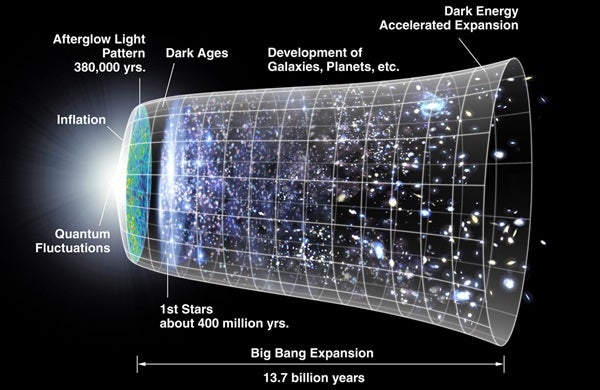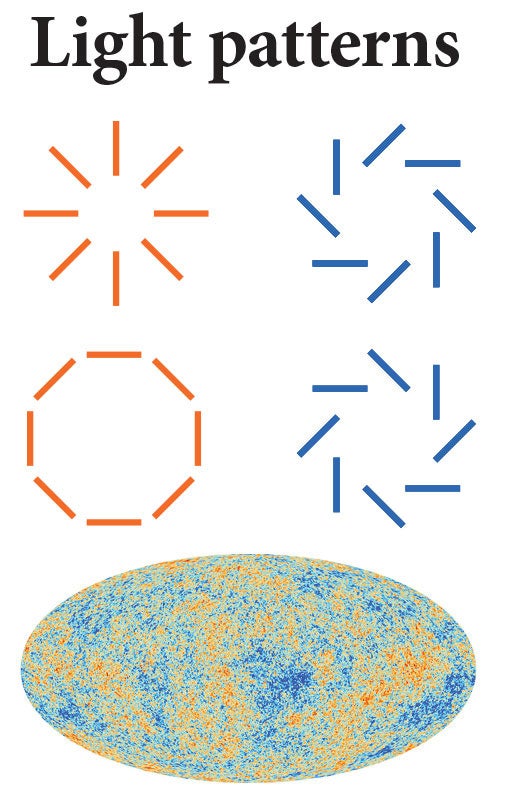Transcript
This puzzle starts the same way our universe did, with the Big Bang.
One hundred years ago, in November 1915, Albert Einstein published his general theory of relativity. It created the basis for our modern understanding of gravity and still drives how astronomers think about incredibly massive objects like black holes. At its core, general relativity says that the presence of matter will distort the fabric of space-time.
It wasn’t long before mathematician Willem de Sitter looked at Einstein’s theory and came up with some revolutionary ideas of his own. He found that while general relativity seems to predict a static and unchanging universe, if you introduce even the slightest amount of matter, those objects begin moving away from each other at exponentially increasing speeds.
Astronomer Edwin Hubble most often gets credit for discovering this expansion in the real world as he cataloged nearby galaxies moving away from our own Milky Way. But if you trace this expansion back to the beginning, it leads to a startling idea: a universe born from an infinitely dense singularity — the Big Bang, which is now an almost universally accepted scientific theory. Observations have repeatedly confirmed it.
But how could something so dense expand?
You’d expect that such intense gravity would cause the universe to collapse into a black hole just as soon as it formed. Inflation theory gives us a way out. It allows for the entire cosmos to double in size 100 times in just a tiny fraction of one trillionth of a second.
Inflation takes the universe from significantly smaller than a proton and rapidly enlarges it to the size of a grapefruit.
Inflation also solves another problem.
The CMB formed 380,000 years after the Big Bang when the cosmic soup of particles had cooled enough to form hydrogen atoms. But not long after astronomers started studying this CMB in detail, they began noticing that tiny variations on one side of the sky look strikingly similar to variations on the opposite side of the sky — 90 billion light-years away.
And the CMB created another puzzle. Measurements of this cosmic microwave background have repeatedly shown that our universe is perfectly flat. But why? If this flatness measure — called Omega — had been different, our universe would have either collapsed on itself or inflated infinitely.
Inflation explains these so-called smoothness and flatness problems with a universe that was once contained within a tiny area. So those regions that are now far apart were once connected. The incredible expansion also gave us a universe that looks smooth, like how mountains on Earth become tiny bumps when you consider the entire planet.
However, while inflation has made it to the core of modern cosmology, there is still no physical evidence for it. Even some supporters believe that if inflation happened, it might not be provable. The search for proof is one of the hottest fields in astronomy today.
And the teams involved are probing the cosmic microwave background radiation for clues. The proof they’re after would come from twists in the CMB called B-modes, where gravitational waves from inflation’s rapid expansion would have rippled through the early universe and polarized it.
The BICEP2 team famously thought they’d found this B-mode polarization last year using their telescope in Antarctica. But other researchers quickly dashed those hopes. The last shreds of uncertainty were ripped away in early February when results from the European Space Agency’s Planck spacecraft were released and showed BICEP2’s instruments had seen polarized dust within our galaxy.
But hope remains for finding signs of these gravitational waves. The BICEP3 phase is in the works. And other efforts to find evidence of inflation are also underway.
One thing is for certain, the first team to win this race to cosmic dawn, if it can be won, is sure to win the Nobel Prize and cement a place in science history beside the likes of Einstein and de Sitter.
Expand your knowledge at Astronomy.com
Check out the complete Astronomy 101 series
Learn about our stellar neighborhood with the Tour the Solar System series
Read about the latest astronomy news











